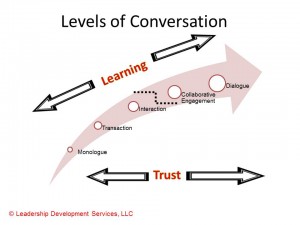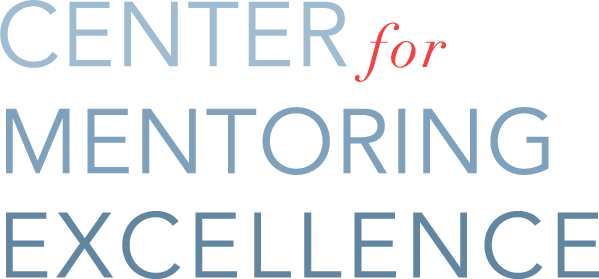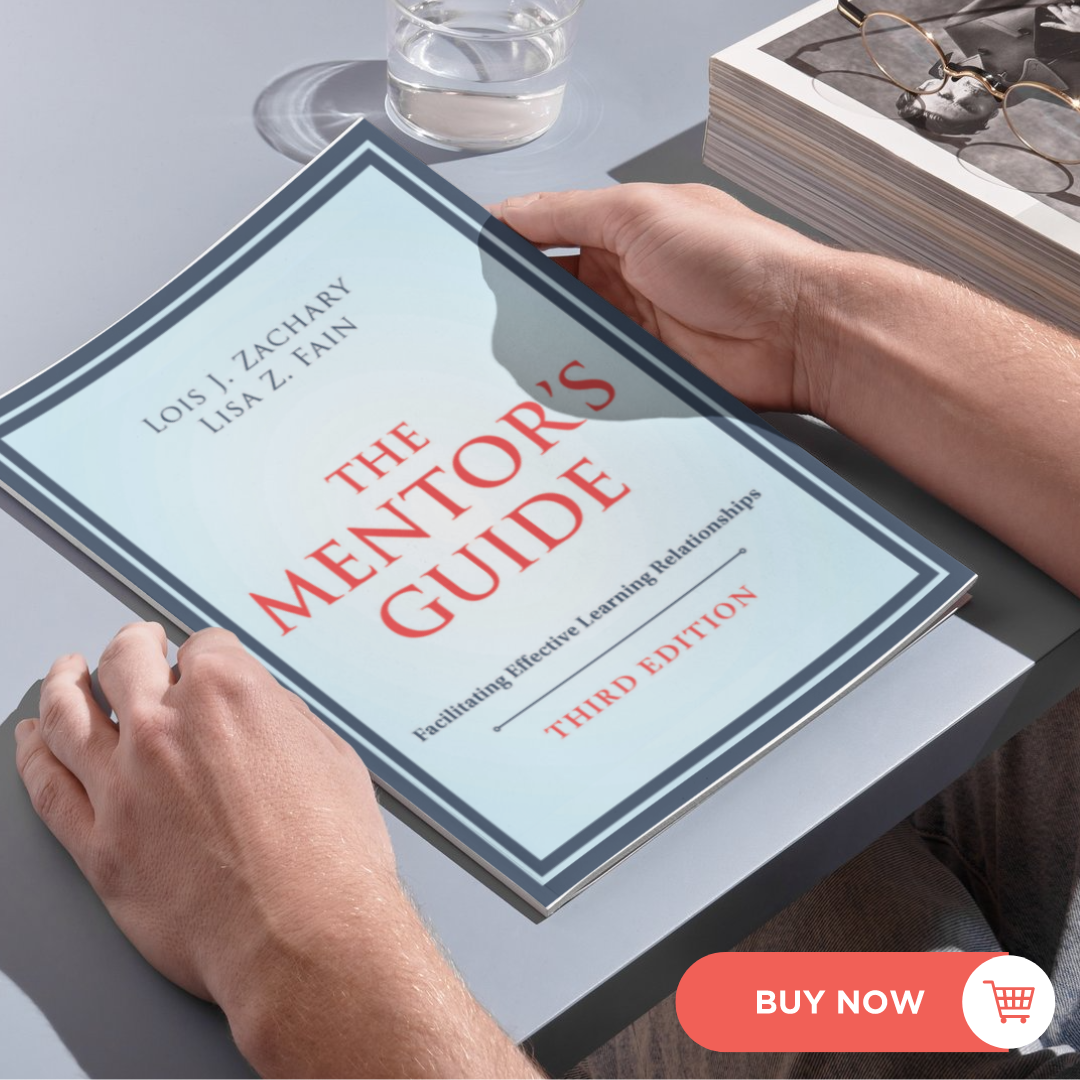by Center for Mentoring Excellence | Jan 31, 2013 | Uncategorized

1. Be actively engaged in a mentoring relationship, or have had previous mentoring experience.
2. Make your own growth and development in the role a priority. Continue to grow your knowledge, information and resources so that you can bring energy and enthusiasm to your mentoring program.
3. Get the data collection process started early on and keep the momentum going.
4. Stay in contact with past participants. Find out how they are applying what they’ve learned, get their feedback on your program and consider them as possible future mentor candidates.
5. Always ask yourself, “What more can I be doing to raise the bar on our mentoring program?”
6. Be on the lookout for opportunities to creative value and visibility for mentoring. Make sure that your leaders are continuously updated on mentoring activities and successes.
7. Be selective in whom you choose to be your program mentors. Remember not everyone should be a mentor.
8. Provide your mentors with feedback so they can continue to elevate their mentoring practices.
9. Ensure time, resources, and leadership support are part of your program infrastructure.
10. Develop a leadership succession plan for the next leader of your mentoring program.
11. Make sure you have enough champions throughout the organization; creating a mentoring culture requires mentoring advocacy.
12. Create a continuum of mentoring education and training programs.
by Center for Mentoring Excellence | Jan 16, 2013 | Uncategorized
 1. Be open and honest with your mentor about your challenges on the job, weaknesses in your leadership, and issues you need to address. Your willingness to be vulnerable demonstrates your commitment to mentoring and strengthens your relationship with your mentor.
1. Be open and honest with your mentor about your challenges on the job, weaknesses in your leadership, and issues you need to address. Your willingness to be vulnerable demonstrates your commitment to mentoring and strengthens your relationship with your mentor.
2. Prepare an agenda or points for discussion and send them to your mentor in advance of your meetings. Outlining topics facilitates self-reflection and helps crystalize your thinking. During the meeting, an agenda keeps you focused and helps you use your time more efficiently. Your mentor will appreciate your preparedness and the serious way in which you approach the engagement.
3. Create a written mentoring agreement. It lays the groundwork for the relationship to move forward. It also provides a benchmark to measure progress and ensures that you stay on track.
4. Identify stretch goals that will truly impact your success, and push yourself to produce discernible results. Your mentor will continue to invest time in the relationship when there is tangible evidence that their efforts are making a difference. Remember that an effective mentoring relationship shouldn’t be too comfortable or complacent. .
5. Take charge of your relationship. While a strong mentor can help you be successful, the responsibility for identifying goals, developing an action plan and staying focused on your learning lies with you. You are in the driver’s seat!
by Center for Mentoring Excellence | Dec 17, 2012 | Uncategorized
Lately, we’ve received a lot of “aha” comments about our Levels of Conversation Model©, particularly as it applies to virtual mentoring. For some, our model serves as wake-up call—an alert about what is missing in a mentoring relationship. For some, it provides a handy reference tool for evaluating the quality of mentoring conversations. Others, after having thought about the model, realize that they never really engaged in conversation.

Virtual mentoring, by its very nature, seems to invite transaction rather than conversation. The exchange goes back and forth very quickly and expeditiously.
EF: Did you read the email I sent to you yesterday?
GH: I did.
EF: What did you think?
GH: Very helpful. Thanks a lot.
EF: How is the goal setting coming?
GH: I could use some help. Do you have any articles about how to set a goal?
EF: I do. Sending it along in the next email.
GH: Got it. Thanks.
Mentoring partners EF and GH exchange information. Communication is clear, tangible and concrete but the conversation doesn’t move anywhere; what remains is a surface transaction.
EFGH Redux
Collaborative engagement fosters deepened insight and reflection and partners seek to understand and explore ideas and learn from each other. There is openness to new insights and learning. Let’s look at that same virtual conversation when collaborate engagement is present. Note how “the EFGH conversation” deepens and takes the relationship to the next level.
EF: I am checking in to find out if you are ready to discuss the article I emailed yesterday. The questions that it raises about leadership really resonated for me and I hope for you. I am wondering what you thought.
GH: I did receive the article and printed it out so I could review it last night.
EF: What did you think?
GH: I found it thought-provoking as well, especially when the authors talked about the concept of vision. I use to think that vision was one of those “pie in the sky” concepts that you’re suppose to talk about – but truthfully, I haven’t ever seen or heard any of my own leaders ever do the “vision” thing. To me, it was more of something you read about but conceptually, but had no place in the real world. Your article made me rethink my position. For the first time, I can see how vision can be used to bind a team together and inspire a group to move forward. I also am thinking about how it much of inspiring a shared vision is my responsibility as a leader.
EF: Yes, vision, is important. I remember also thinking early on in my career that everyone seems to talk about “the vision thing” but it never about what it is and how to achieve it. I kept waiting for others to connect the dots and it never happened.
GH: I sure would like to learn that skill but I have no clue of where to start. Do you have some resources you could send me?
EF: I do, and I also think that that we have some great resources right in front of us – including you. I’d like you to think about “the vision thing” not just read about it. How about if you start by observing the leaders around you who inspire a shared vision? Maybe jot down some notes about what they say or do that enables them to inspire a shared vision. What do you think?
GH: Unfortunately, there aren’t that many that do it effectively. Nevertheless, It might be interesting for me to notice how what they say or do impacts those around them. Like their reactions…. As well as mine.
EF: I am glad to see you are committed to learning more about vision and how you can incorporate it into your leadership toolkit.
GH: Yes, I am ready to dig in. Let’s talk more about this next time and maybe we can frame it up into one of my mentoring goals. I would like to see how I can use vision and get some tangible results.
EF: Let’s do it!
The second “EFGH conversation” has forward movement. You can feel momentum gathering as the conversation moves the relationship to a new level. A qualitative shift has taken place in the dynamic and content of the conversation. Both EF and GH put new ideas out on the table and explore them together, creating new understandings. Both EF and GH were open and present.
7 Quick Strategies for Moving Toward Collaborative Engagement
1. Use information and resources use to enrich and deepen conversation.
2. Use information and resources to enrich and deepen mentoring conversation.
3. Use probing questions. For example: What? Where? When? Why? How?
4. Use clarifying questions. For example: Is that correct? How do you define that? Is that similar to?
5. Be reflective as you respond by paraphrasing what you hear. For example: So you feel that… So you are saying that… What I think I am hearing is…
6. Make sure you allot enough time to engage in conversation.
7. Check in with your mentee to make sure that meaningful learning is taking place during your conversation.
by Center for Mentoring Excellence | Dec 1, 2012 | Uncategorized
When leaders commit to their own development as mentors they enlarge their capacity to lead, support and grow their people which has a ripple effect throughout the organization. Even with the best intentions, not all mentors are fully prepared for the role. (more…)
by Center for Mentoring Excellence | Sep 16, 2012 | Uncategorized
Renaldo and his mentor were three-quarters of the way through the mentoring year. It was September and he suddenly realized that only three months remained and he still had not accomplished his learning objectives. His goal was to become more promotable by gaining exposure to operations in different parts of the company. He decided that he had to get back in the driver’s seat and have a conversation with his mentor.
Renaldo: I really want to make the most of this relationship in the time we have left. I don’t think I have worked as hard as I should have at focusing on the goals we set early in our relationship. I got caught up in some really great conversations and I allowed that time to take the place of the experience I was seeking in getting operations exposure.
Mentor: Tell me more. What exactly do you mean?
Renaldo: Well, a lot of change has been happening in the Company and we talk about that a good deal of the time. Don’t get me wrong, I am learning a lot from those discussions but I realize now that we haven’t made much progress on the goals we set. I’d like to spend our time today reviewing those goals and maybe even redefining them. Is that okay?
Mentor: I am glad we are having this conversation. So, what are you thinking?
Renaldo: I really want more exposure in the company. I figure that once I get a broader picture it may help me identify another opportunity in the company where I can make a much more significant contribution. I want to make the most of the time we have left and see if we can still put a cross-functional project in place that would give me an expanded exposure to at least one other area. With three months left, do you think there is time to identify a good project for me? I am really ready to take one on.”
Mentor: Good! Let’s get started.
If you are a mentee, you can accelerate your own growth and development by being proactive and asking your mentors for what you need when you need it.
If you are you not getting what you need from your mentoring relationship, it may be that you are not asking for what you need!
What Is Getting in Your Way?
- I don’t feel comfortable with my mentor yet
- I am afraid that by asking I am exposing my weakness
- I don’t know how to “make the ask” in a respectful way
- I don’t want to appear incompetent
- I am afraid of the repercussions
- I am a shy person
What You Can Do
- Speak up.
- Be specific and descriptive in asking for what you need.
- Offer the reason for why you need what you are asking for.
- Make sure that what you’re asking is clear and understandable.
- Be direct and get to the point quickly.
- Be authentic.
- Check for understanding when you receive feedback.
Take the initiative. Get back in the driver’s seat. Make it a habit to ask for what you need. The more specific and descriptive you are in asking for what you need the more you are likely to succeed.
by Center for Mentoring Excellence | Aug 26, 2012 | Uncategorized
Matt and his mentor, Anne Marie, have been meeting regularly for nearly four months. With each meeting, Matt feels more confident and grounded. He thinks he has made significant progress and that relationship is on track (but he isn’t 100% sure). He assumes that Anne Marie is good with it as well. But is she? Is Matt’s assumption correct? (more…)


 1. Be open and honest with your mentor about your challenges on the job, weaknesses in your leadership, and issues you need to address. Your willingness to be vulnerable demonstrates your commitment to mentoring and strengthens your relationship with your mentor.
1. Be open and honest with your mentor about your challenges on the job, weaknesses in your leadership, and issues you need to address. Your willingness to be vulnerable demonstrates your commitment to mentoring and strengthens your relationship with your mentor.


